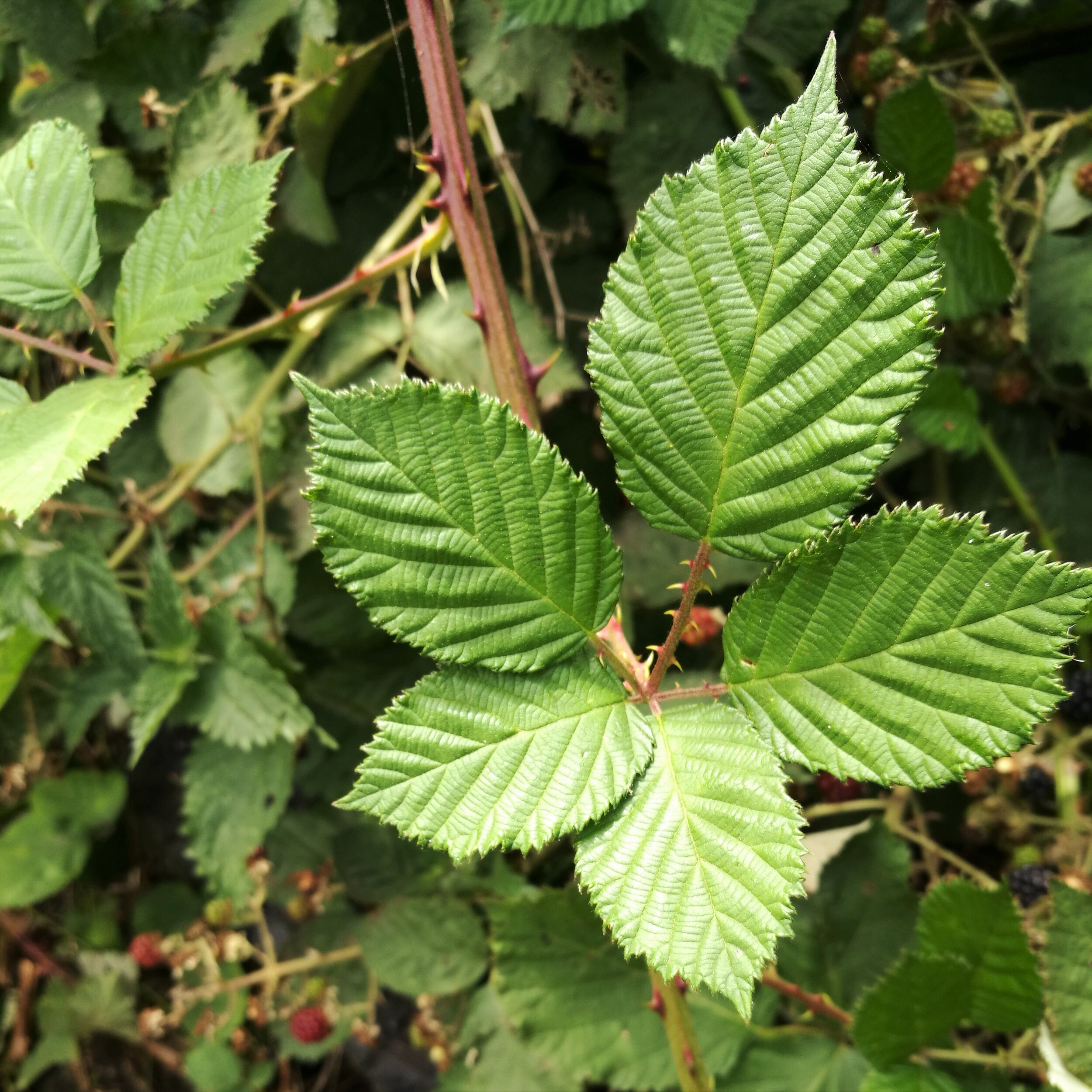Common Blackberry (Rubus fruticosus)
Also known as ‘Bramble’, this is one of the most common wild plants found growing along hedgerows, woodlands, field margins, walls, and just about everywhere else where plants can grow in the UK. It’s distinctive enough to be difficult to mistake for other plants, with exceptions being the wild rose and wild raspberry, which it resembles in some aspects, and which are relatives, all belonging to the Rose family (Rosaceae). Many people consider it a native invasive, as it will take over an area and be very difficult to remove once it has established itself.
What it looks like
It produces heavily thorny, arching canes which will grab at any fabric you are wearing. Leaves are alternate, palmate and compound (see photos). Leaves are darker above than below, and will have thorns on the central veins running up the centre. Bramble canes will flower and fruit in their second year, making this a biannual plant. Beginning in spring, it produces white, or pale pink, five petaled flowers roughly an inch in diameter. It will fruit in summer and autumn, and continue producing flowers while it is fruiting, making the harvesting period quite long. Berries are about half and inch long, clustered, and ripening generally from the tip of the cane backwards. They begin green, then red, then purply black. Unlike a raspberry, they keep their ‘cores’ when you pick them, but should come away from their sepals (the tiny basal leaves at the base of the fruit) if they are truly ripe.
USES
Harvest berries mid-July-October. They will continue fruiting after this, but the flavour isn’t so good and traditional superstitions claim that fairies have cursed them. Plus, they’re best left as a winter food source for birds and animals at that point. Blackberries are a commonly harvested wild fruit, with a good combination of tartness and sweetness. They are relatively low in sugar and high in anthocyanins (an antioxidant), giving them their deep red-to-purple colour. They are a good source of other vitamins and minerals (including vitamins A, C, and E) making these highly nutritious as well as tasty. Blackberries can be eaten raw, dried, or made into jam, jellies, crumbles, pies, etc. The berries freeze very well.
Traditionally, blackberry leaf tea has been used to treat sore throat, coughs and colds, upset digestion and diarrhoea. It is considered a good source of further vitamins and minerals. However, care must be taken when using wild plants medicinally, and the reader is encouraged to seek medical advice about their own health.



